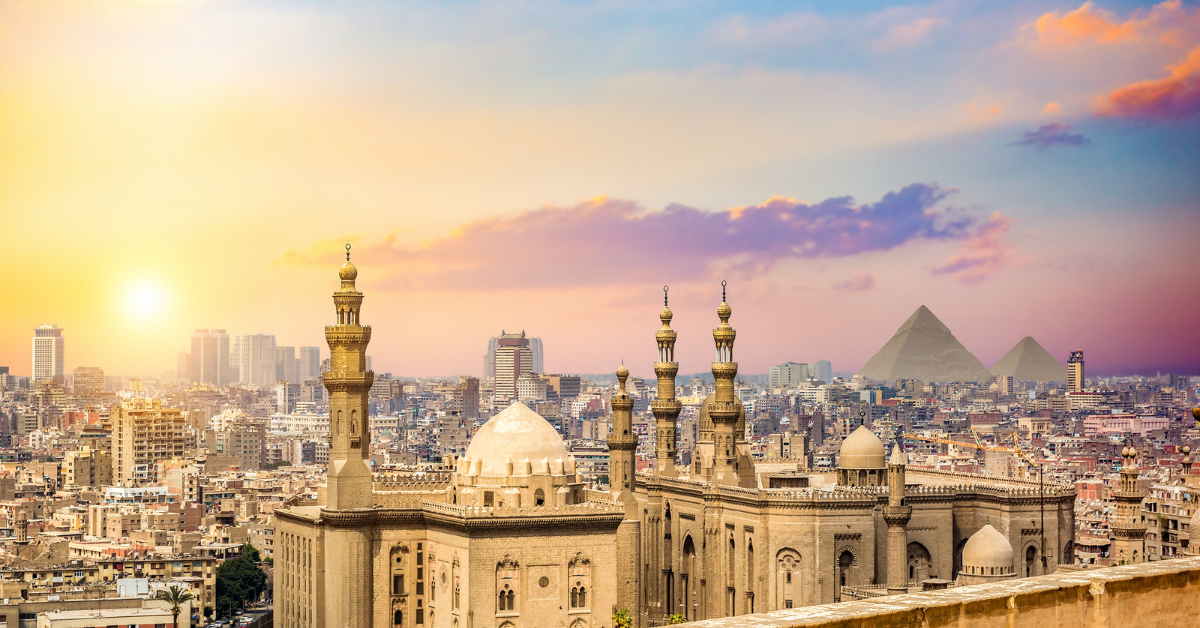Cairo is a city where ancient history and modern urban chaos coexist. For many Japanese people, it represents a dream destination filled with pyramids and culture, yet also a place of traffic disorder and safety concerns. This article explores the complex images Japanese people hold of Cairo, both positive and negative.
First Impressions of Cairo for Japanese People
When Japanese people hear “Cairo,” the first things that come to mind are the Pyramids and the Sphinx. Because these are repeatedly shown in school textbooks, TV programs, and travel brochures, Cairo is strongly perceived as a “city of history.” However, upon visiting, that impression often changes dramatically.
High-rise buildings and modern shopping malls stand alongside historic mosques and the old city. This coexistence of ancient ruins and modern urban spaces makes Cairo appear far more dynamic than expected. The heavy traffic, the constant sound of car horns, and dust-filled streets create a memory of Cairo as “an energetic yet chaotic city.”
Positive Images of Cairo
For Japanese people, Cairo’s appeal lies mainly in its rich history and culture. The Pyramids, the Sphinx, and the treasures of the Egyptian Museum such as Tutankhamun’s golden mask are world-class cultural assets. Magnificent Islamic architecture and lively markets are also valued as places where one can experience exotic atmosphere.
Another positive element is the friendliness of local people. Many travelers feel welcomed by locals who engage them in conversation or offer assistance. Bargaining in the markets, something rare in Japan, is remembered as an enjoyable cultural experience by many.
| Positive Image | Background or Reason |
|---|---|
| Center of History | Concentration of pyramids and ancient sites |
| Cultural Appeal | Islamic architecture and bustling markets |
| Warmth of People | Friendly and hospitable interactions |
| Exotic Atmosphere | A crossroads of Middle Eastern and African culture |
Negative Images of Cairo
Alongside positive impressions, there are also negative aspects. The most significant is concern about safety. News footage of demonstrations and terrorism has left a lasting impression of Cairo as a dangerous city.
Another factor is traffic disorder, which shocks many Japanese visitors. The constant honking of horns and erratic driving contrast sharply with Japan’s orderly roads. Additionally, the harsh environment—heat, dust, and differences in cleanliness—causes discomfort.
Aggressive solicitation is also mentioned frequently. Persistent sales pitches for souvenirs or tours can make sightseeing stressful.
| Negative Image | Background or Reason |
|---|---|
| Safety Concerns | Strong influence of demonstrations and terrorism reports |
| Traffic Disorder | Constant congestion and honking |
| Harsh Environment | Heat, dust, and sanitation differences |
| Aggressive Solicitation | Frequent targeting of tourists |
Real Impressions from Japanese Travelers
Testimonials from Japanese visitors show that Cairo leaves mixed impressions.
| Experience | Impression of Japanese Visitors |
|---|---|
| Seeing the Pyramids | Unforgettable lifelong impression |
| Shopping in markets | Some enjoyed bargaining, others were exhausted by persistent sellers |
| Traveling within the city | Many felt tired from congestion and noise |
| Interaction with locals | Often described as kind and warm |
Thus, for Japanese people, Cairo is remembered as “a city of surprises, amazement, and confusion at the same time.”
Cairo’s Food Culture as Seen by Japanese Visitors
Beyond sightseeing, one of the most striking memories for Japanese visitors is food culture. Egyptian cuisine makes heavy use of spices, beans, and vegetables, which are very different from Japanese meals. Popular dishes include Koshari and Falafel.
| Typical Dish | Features | Japanese Evaluation |
|---|---|---|
| Koshari | Mix of rice, pasta, beans topped with tomato sauce | Cheap, filling, and well-received |
| Falafel | Chickpea croquettes | Flavorful, healthy, and popular |
| Shawarma | Sliced meat in bread | Similar to Japanese kebab, familiar taste |
| Mint Tea | Sweet herbal tea | Cultural experience but sweetness surprises many |
Food is seen as an essential part of cultural experience, adding another dimension to Japanese impressions of Cairo.
The Influence of Media on Cairo’s Image
Japanese media plays a large role in shaping perceptions of Cairo. Travel programs highlight the pyramids and Nile cruises, presenting it as a dream destination. In contrast, news reports emphasize demonstrations and security issues, reinforcing the idea of a dangerous city.
| Type of Media | Image of Cairo Presented | Perception by Japanese People |
|---|---|---|
| Travel programs | Pyramids, markets, Nile River | Inspire admiration and desire to visit |
| News reports | Demonstrations, terrorism | Strengthen fear and safety concerns |
| Films and dramas | Exotic settings | Seen as romantic but distant and unusual |
Because of this duality, Japanese people see Cairo as “a city where dreams and fears coexist.”
The Complex Image Japanese People Hold
In summary, Cairo represents both “historical admiration” and “urban disorder” for Japanese people. Cultural treasures such as the pyramids and mosques inspire awe, while traffic chaos, sanitation issues, and safety concerns generate anxiety. This duality leads many Japanese to feel “it’s a city to visit once, but difficult to live in.”
Conclusion
The general image Japanese people hold of Cairo is a mixture of admiration and unease. On the positive side, there is respect for its history, culture, and the warmth of its people. On the negative side, concerns over safety, traffic, and environment remain strong.
It is precisely this coexistence of positives and negatives that makes Cairo unique. For Japanese travelers, Cairo is not merely a tourist destination but a stage where history and daily life can be experienced simultaneously, leaving unforgettable memories.






